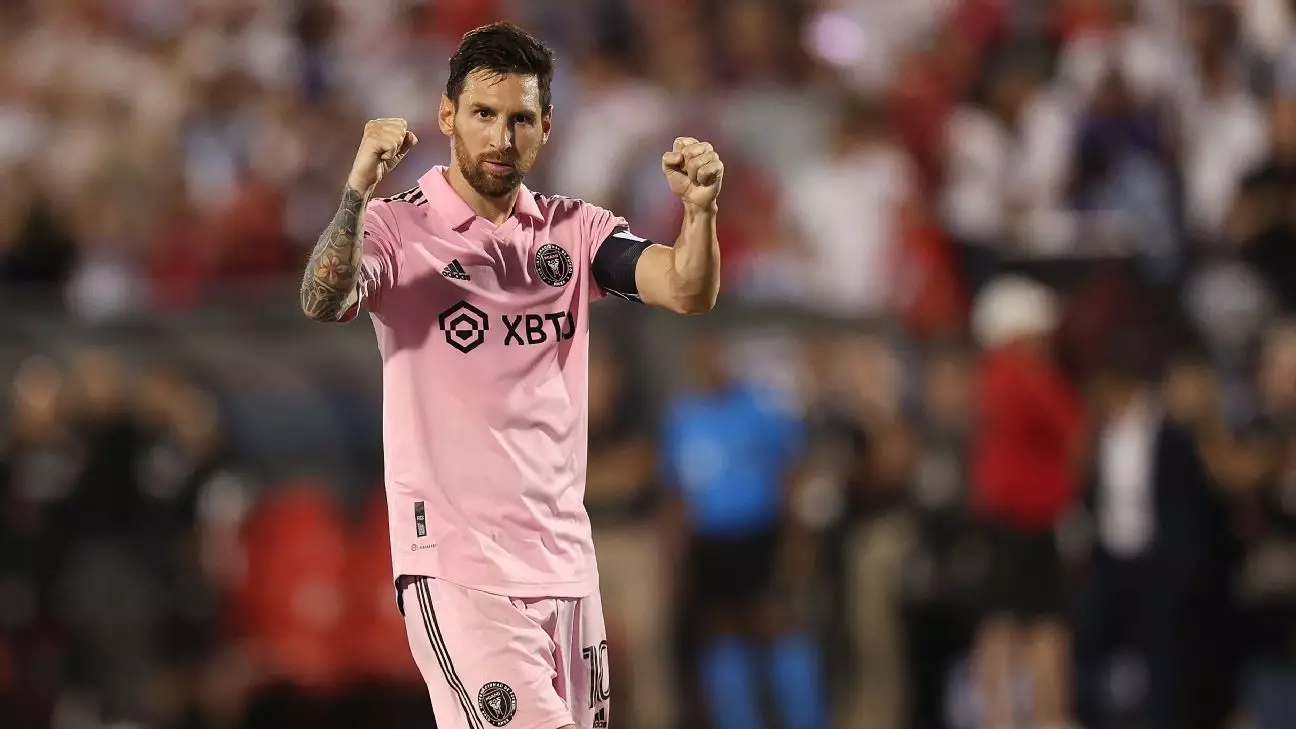The advent of Lionel Messi in Major League Soccer (MLS) has revolutionized the landscape of American soccer, leading teams to adopt unprecedented strategies to maximize attendance and fan engagement. This seismic shift is reflected not just in soccer statistics but also in cultural and economic factors that have reshaped how clubs manage their operations on game days. From expanded venues to spectacular marketing efforts, the impact of Messi’s presence is apparent at every level of the league.
Unexpected Announcements and Fan Reactions
A notable example of the shift in focus came when the Vancouver Whitecaps made an announcement just days before their match against Inter Miami, where Messi was rumored to be absent. CEO Axel Schuster’s proclamation about the status of Messi and other star players stirred discontent among fans, compelling media outlets to react swiftly. Instead of withdrawing into the shadows, the Whitecaps boldly offered a 50% discount on stadium food as a goodwill gesture—a move that exemplifies the lengths clubs are willing to go to cater to their fan base amid disappointment.
Such actions are not isolated occurrences; the Chicago Fire previously adopted similar strategies when they offered credits and discounts for ticket buyers in anticipation of Messi’s potential absence. It becomes evident that the allure surrounding Messi compels teams to creatively engage their audiences, attempting to mitigate any disappointment while capitalizing on the immense interest his presence inspires.
Decisions Driven by Demand
As Messi commenced his journey with Inter Miami, teams around the league reevaluated their operational strategies to embrace the influx of Messi fans, both local and visiting. The league witnessed a shift from traditional engagements to optimized marketing campaigns and upgraded facilities aimed at enhancing the spectator experience. This decision-making process is evident in how teams are now staging games in larger venues.
Take Sporting Kansas City, for example. The team moved their game against Inter Miami from their soccer-specific Children’s Mercy Park to Arrowhead Stadium, an NFL venue, thus opening its doors to a much larger audience. The result was a staggering total of 72,610 fans—an incredible feat that underscored the sales potential and excitement Messi brings wherever he plays. Other franchises followed suit, expanding their ticket offerings and accommodating extra fans eager to experience the Miami phenomenon live.
Moreover, the secondary ticket market has witnessed a frenzy, particularly for matches involving Inter Miami. For instance, Montreal’s Saputo Stadium experienced an average ticket price surge from around $69 to an astounding $465 when hosting this team. The cheap seats became relics of the past as the demand skyrocketed, resulting in resale tickets reaching prices upwards of $729.
This inflation in ticket demand demonstrates the broader economic impact Messi’s signings have on MLS, pushing clubs to rethink pricing strategies and availability to optimize profitability while fulfilling fan expectations. This growing secondary market signals to other clubs that investment in high-caliber talent yields significant returns, not just in ticket sales but also in long-term fan loyalty.
Breaking Attendance Records
The quest to witness Messi in action has driven record-breaking attendance across the league. Major league franchise attendance records have been shattered repeatedly, and MLS noted a remarkable rise in average attendances. The influx of fans is not merely confined to stadiums; it is projecting MLS to new heights of visibility on national and international stages.
Clubs like Atlanta United saw their matches against Inter Miami draw over 71,000 fans, showcasing how Messi’s influence revives interest in soccer. Even traditional soccer-dedicated venues witness this anomaly as fans flock to see this soccer luminary. Consequently, every engagement with Inter Miami becomes an event not to miss, fundamentally altering the league’s dynamics.
MLS Commissioner Don Garber aptly encapsulated Messi’s impact as “unimaginable,” suggesting that the metrics of attendance, engagement, and revenue have surpassed expectations. Looking to 2025, as Messi potentially enters his final season in MLS, teams are strategizing to maximize their remaining opportunities to host him, revealing that the impact extends far beyond the pitch; it is intrinsically tied to the future growth of soccer in North America.
As Messi continues to grace the MLS scene, the league’s entities are crafting an evolving narrative filled with exciting possibilities. The increased attendance, burgeoning fan engagement, and staggering economic implications attest to the transformative power of one player and pave the way for a soccer culture that is finally gaining ground within the United States. The legacy of Messi will likely echo in the halls of Major League Soccer long after he departs, setting a standard for what’s possible in professional sports.

Leave a Reply